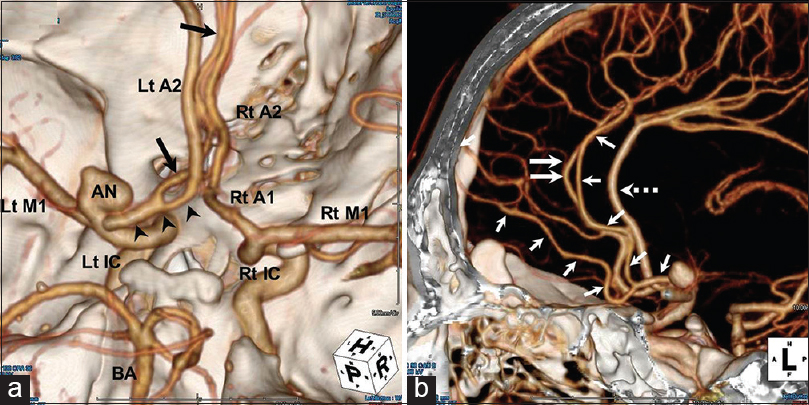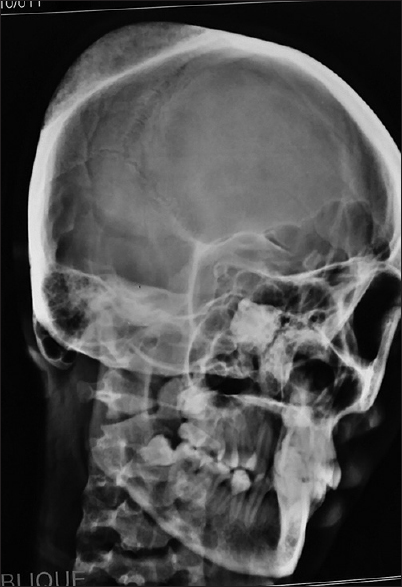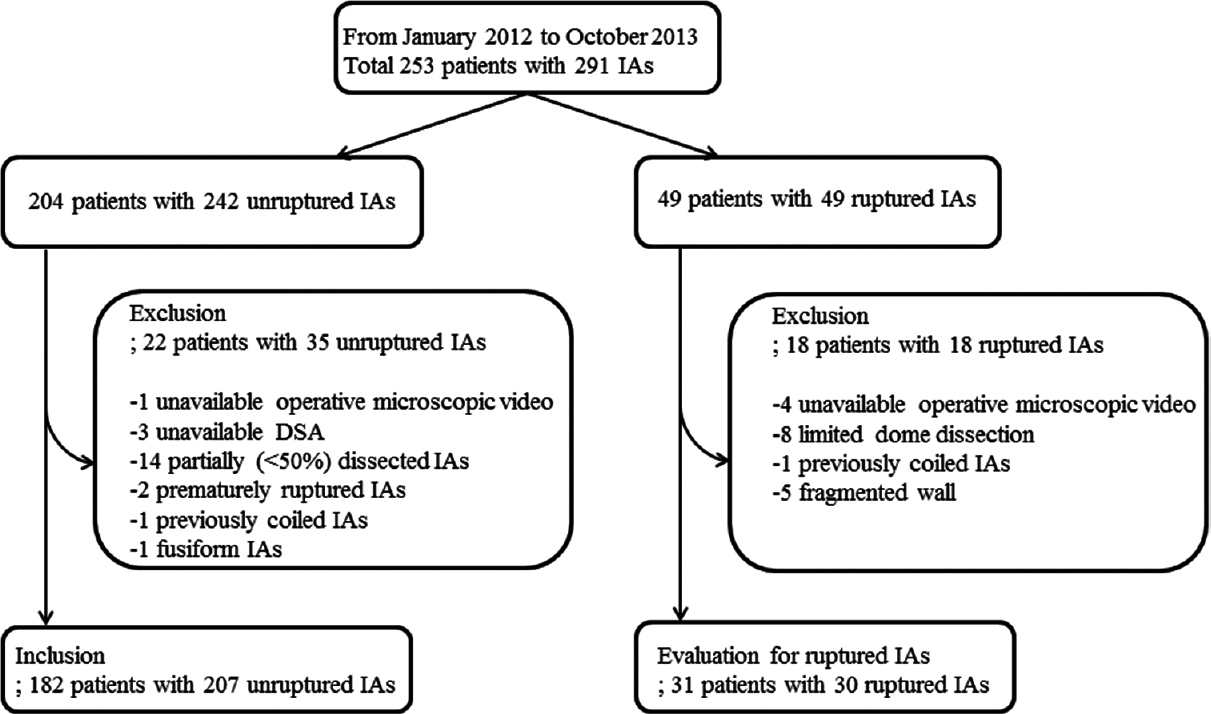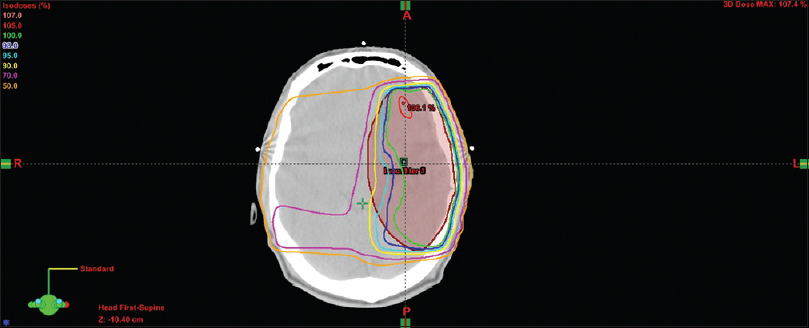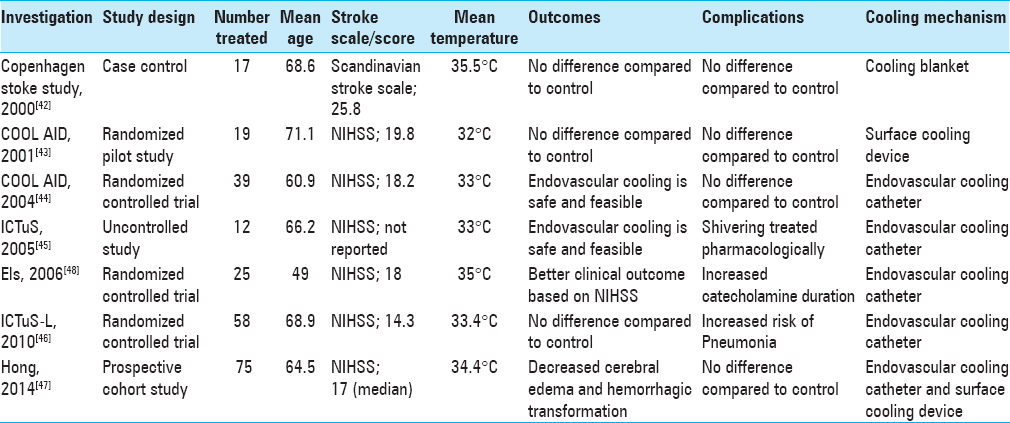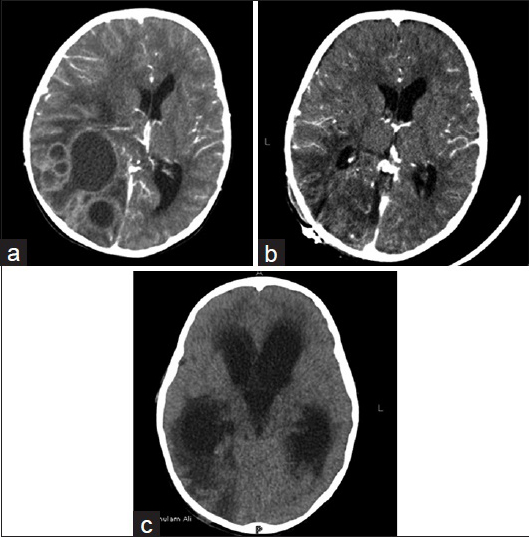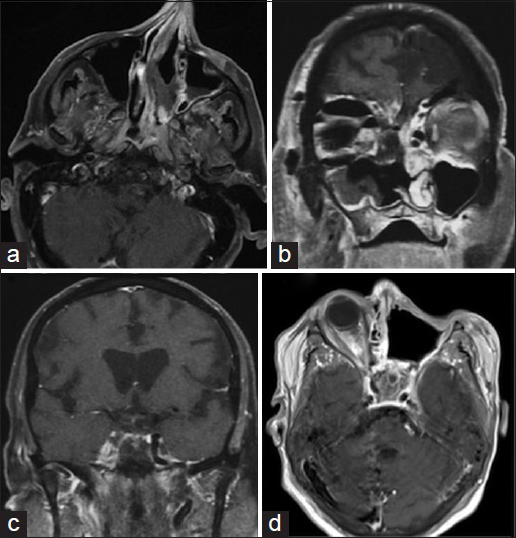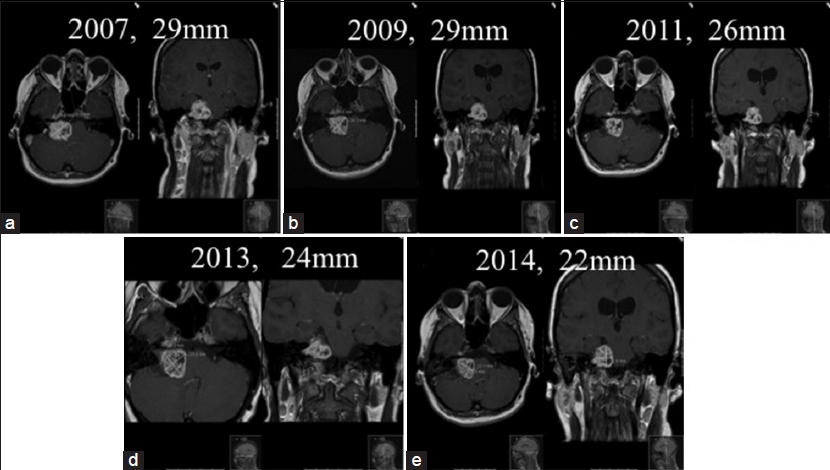An unusual variant of the callosomarginal artery from the A1 segment of the anterior cerebral artery
Date of publication: 03-Jun-2016
Background:Although the anatomy of the A1 segment of the anterior cerebral artery (ACA) is highly variable, a callosomarginal artery (CMA) arising from the A1 segment of the ACA is rare.
A unique case of calvarial hemangioma
Date of publication: 03-Jun-2016
Background:Calvarial hemangiomas are one of the rarest neoplasms affecting the skull, predominantly occurring in parietal and frontal bones.
Diabetes may affect intracranial aneurysm stabilization in older patients: Analysis based on intraoperative findings
Date of publication: 03-Jun-2016
Background:Only a small proportion of aneurysms progress to rupture. Previous studies have focused on predicting the rupture risk of intracranial aneurysms. Atherosclerotic aneurysm wall appears resistant to rupture. The purpose of this study was to evaluate clinical and morphological factors affecting atherosclerosis of an aneurysm and identify the parameters that predict aneurysm stabilization.
Radiotherapy-related intracranial aneurysms: A role for conservative management
Date of publication: 03-Jun-2016
Background:Radiotherapy-related intracranial aneurysms are a recognized but rare phenomenon and often present following rupture leading to subarachnoid hemorrhage. Treatment poses a particular dilemma and both endovascular, and surgical approaches have been used with varied success. We present the case of a radiotherapy-related aneurysm treated conservatively with a favorable outcome.
Therapeutic hypothermia and ischemic stroke: A literature review
Date of publication: 03-Jun-2016
Background:Ischemic stroke is the fifth leading cause of death in the US. Clinical techniques aimed at helping to reduce the morbidity associated with stroke have been studied extensively, including therapeutic hypothermia. In this study, the authors review the literature regarding the role of therapeutic hypothermia in ischemic stroke to appreciate the evolution of hypothermia technology over several decades and to critically analyze several early clinical studies to validate its use in ischemic stroke.
Cerebral aspergillosis and pulmonary tuberculosis in a child with chronic granulomatous disease
Date of publication: 30-May-2016
Background:Chronic granulomatous disease (CGD) is an immune disorder that affects phagocytes. It is characterized by recurrent or persistent bacterial and fungal infections. Reports of tuberculosis (TB) in patients with CGD are rare. In developing countries, where TB is endemic, possibility of other chronic infections is often overlooked by physicians.
An aggressive multidisciplinary approach reduces mortality in rhinocerebral mucormycosis
Date of publication: 25-May-2016
Background:Rhinocerebral mucormycosis occurs in immunocompromised hosts with uncontrolled diabetes, solid organ transplants, and hematologic malignancies. Primary disease is in the paranasal sinuses but often progresses intracranially, via direct extension or angioinvasion. Rhinocerebral mucormycosis is rapidly fatal with a mortality rate of 85%, even when maximally treated with surgical debridement, antifungal therapy, and correction of underlying processes.
Spontaneous shrinkage of vestibular schwannoma
Date of publication: 19-May-2016
Background:“Watch, wait, and rescan” (WWR) has an established place as a successful management option for a significant proportion of vestibular schwannomas (VS) as an alternative to microsurgical removal or stereotactic radiotherapy. VS may grow slowly and continuously, followed by stagnation or even shrinkage. We present two case reports of spontaneous shrinkage of VS along with a review of the literature.
Erratum: A rare intracranial tumor consisting of malignant anaplastic and papillary meningioma subtypes
Date of publication: 19-May-2016


